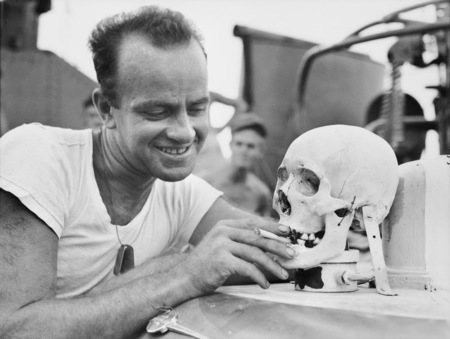 | ||
The practice of human trophy collecting involves the acquisition of human remains. The intent may be to demonstrate dominance over the deceased, such as scalp-taking or forming necklaces of human ears or teeth, or to commemorate the deceased, such as the veneration of the relics of saints. It can be done to prove ones success in battle, or to show off one's power to others. Murderers' collection of their victims' body parts have also been described as a form of trophy-taking; the FBI draws a distinction between souvenirs and trophies in this regard.
Contents
While older customs generally included the burial of human war trophies along with the collector, such items have been sold in modern times.
Trophies of dominance
Headhunting has been practiced across the Americas, Europe, Asia, and Oceania for millennia. One analysis of the practice in early North American societies linked it to social distance from the victim.
In North America, it was common practice before, during or after the lynching of African-Americans for those involved to take souvenirs such as body parts, skin grafts, bones, etc.
Trophies of commemoration
Well, these white guys would sometimes take the dog-tag chain and fill that up with ears. For different reasons. They would take the ear off to make sure the VC was dead. And to confirm that they had a kill. And to put some notches on they guns. If we were movin' through the jungle, they'd just put the bloody ear on the chain and stick the ear in their pocket and keep on going. Wouldn't take time to dry it off. Then when we get back, they would nail 'em up on the walls to our hootch, you know, as a trophy. They was rotten and stinkin' after awhile, and finally we make 'em take 'em down.
Body-snatching
Body-snatching may sometimes be conducted in order to retain a body part as a trophy.
